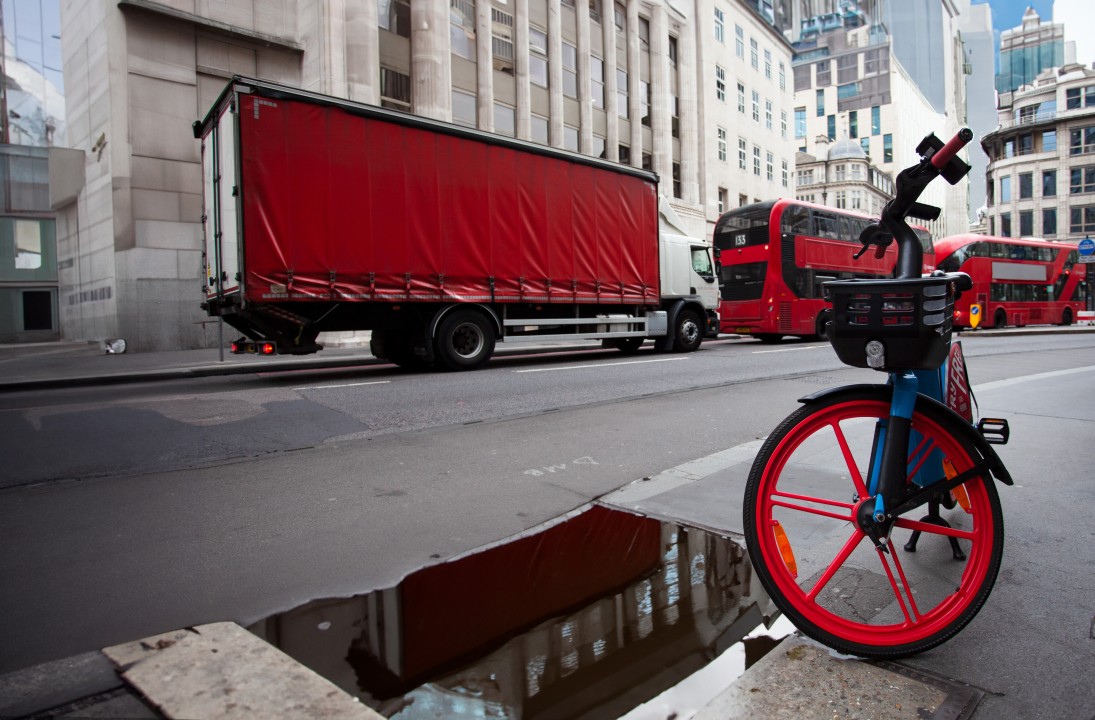
Susie Jones
Cinque miti sull'autotrasporto sfatati
Creato: 19/08/2024
•
Aggiornato: 19/08/2024
La guida degli autocarri è stata per secoli la spina dorsale del commercio globale, consegnando merci e beni di prima necessità in tutto il mondo. Tuttavia, nonostante il suo ruolo essenziale, l'autotrasporto è stato a lungo avvolto da miti e idee sbagliate.
Sebbene alcuni di questi miti vengano presi con un pizzico di sale, altri possono danneggiare il settore degli autotrasporti e coloro che vi lavorano. È quindi fondamentale sfatare queste idee sbagliate per garantire che la guida degli autocarri rimanga una scelta professionale interessante per le generazioni future. Abbiamo chiesto alla nostra comunità di autisti su Facebook quali sono i più grandi miti che hanno sentito durante la loro carriera.
1. I camionisti stanno seduti tutto il giorno
"I camionisti non fanno altro che stare seduti tutto il giorno". Una frase comunemente sentita dai camionisti, Luke.
Il mondo degli autotrasporti non è solo guida. Gli autisti di camion spesso collaborano con altre persone presso terminali, banchine e magazzini per scaricare e caricare il carico. Anche al volante non è tutto liscio come l'olio. I camionisti devono concentrarsi sulle manovre dei loro veicoli e devono attenersi alle severe norme del tachigrafo. È indispensabile conoscere bene le aree in cui si può o non si può guidare, oltre a essere consapevoli dei potenziali pericoli.
2. Tutti i camionisti sono uomini
Si tratta di uno stereotipo superato che non rispecchia la realtà moderna del trasporto merci. Recentemente si è verificato un significativo cambiamento nel rapporto tra conducenti di camion di sesso maschile e femminile. Nel 2021, le donne autiste costituivano appena l'1% dei 315.000 camionisti del Regno Unito. Tuttavia, questo numero sta aumentando di anno in anno, man mano che il settore si evolve e abbraccia l'inclusività. Autisti come Jodi Smith sono preziosi sostenitori delle donne nel settore. Jodi documenta online la sua esperienza di autotrasportatrice, ispirando altri a mettersi al volante.
3. Chiunque può guidare un camion
Molti pensano che se sono in grado di guidare un'automobile, sono in grado di guidare un camion. Tuttavia, la guida degli autocarri richiede una serie di competenze uniche che potrebbero non essere adatte a tutti. Per guidare un camion commerciale è necessario ottenere un Certificato di Competenza Professionale (CPC). Per ottenere il CPC, i conducenti devono sottoporsi a cinque prove:
Teoria
Studio di caso
Esercizi in fuoristrada
Guida su strada
Dimostrazioni pratiche
Inoltre, la guida dei camion richiede uno stile di vita che non è adatto a tutti, con lunghe ore di isolamento sulla strada che spesso presentano sfide inaspettate.
4. Spazio di frenata
"Gli automobilisti pensano che lo spazio di frenata di un camion sia uguale a quello di un'automobile" è una frase che il camionista Paul ha sentito dire troppe volte.
Lo spazio di frenata di un camion è significativamente diverso da quello di un'automobile a causa di diversi fattori: - Peso: il peso complessivo di un autocarro carico è superiore a quello di un'autovettura, il che significa che è necessaria una forza maggiore per rallentare e fermarsi.
- Meccanica: il sistema frenante di un autocarro è stato progettato per carichi pesanti, il che significa che gli assali e i componenti dei freni sono più grandi e più robusti, con conseguenti tempi di risposta più lunghi e distanze di frenata maggiori.
A 60 miglia orarie, un camion ha bisogno di 132 metri per frenare, rispetto ai 73 metri di un'autovettura: ciò evidenzia l'importanza di lasciare spazio sufficiente tra sé e un camion quando si frena bruscamente.

5. I camionisti sono sporchi
Nel corso degli anni, ai camionisti è stato attribuito lo stereotipo di sporchi e pigri: una generalizzazione ingiusta. Molti autisti di lungo raggio trascorrono molto tempo lontano da casa e in cabina, il che significa che l'igiene e la pulizia della cabina sono una priorità.
È fondamentale sfatare i miti e le idee sbagliate che circondano la guida dei camion per comprendere meglio questa professione. Sfatare alcuni dei miti più comuni creerà un settore più attraente per le generazioni future e aumenterà la consapevolezza che la guida dei camion è una professione altamente qualificata che svolge un ruolo vitale nella nostra economia.
Il camionista si sente solo?
Prima di prendere in considerazione la carriera di camionista, è fondamentale capire cosa comporta questo lavoro. Un problema per molti camionisti è quello di affrontare la solitudine: lunghe ore sulla strada con poca o nessuna comunicazione è difficile per alcuni, ma un sogno per altri.
Inoltre, il tempo trascorso lontano dai propri cari può avere un impatto negativo su molti. Tuttavia, per gli autisti è diventato più facile comunicare con amici e familiari tramite telefono o videochiamata. I camionisti hanno a disposizione numerosi [forum] (https://epicvue.com/6-ways-you-can-handle-loneliness-as-a-truck-driver/#:~:text=Loneliness%20is%20a%20huge%20issue,the%20isolation%20on%20the%20road.) e consigli utili per alleviare la solitudine.
Un camionista può avere un secondo lavoro?
Poiché il Regno Unito sta attraversando la crisi del costo della vita, un maggior numero di conducenti sta prendendo in considerazione l'idea di un secondo lavoro. Tuttavia, il secondo lavoro presenta problemi e rischi, soprattutto nel mondo degli autotrasporti. Prima di procedere, gli autisti devono valutare se la loro azienda applica una politica in materia di lavoro secondario.
Quando creano una politica di impiego secondario, le aziende e gli operatori devono considerare gli effetti sulle prestazioni dei conducenti, sulle presenze e sulla stanchezza. Per non parlare del rispetto delle regole sull'orario di lavoro dei conducenti.



